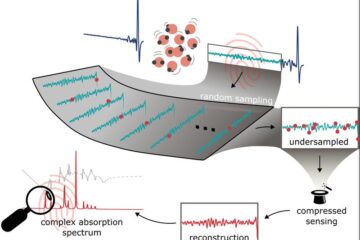Dinosaur-Chewing Mammals Leave Behind Oldest Known Tooth Marks

Nicholas Longrich of Yale University and Michael J. Ryan of the Cleveland Museum of Natural History came across several of the bones while studying the collections of the University of Alberta Laboratory for Vertebrate Palaeontology and the Royal Tyrrell Museum of Palaeontology. They also found additional bones displaying tooth marks during fieldwork in Alberta, Canada. The bones are all from the Late Cretaceous epoch and date back about 75 million years.
The pair discovered tooth marks on a femur bone from a Champsosaurus, an aquatic reptile that grew up to five feet long; the rib of a dinosaur, most likely a hadrosaurid or ceratopsid; the femur of another large dinosaur that was likely an ornithischian; and a lower jaw bone from a small marsupial.
The researchers believe the marks were made by mammals because they were created by opposing pairs of teeth—a trait seen only in mammals from that time. They think they were most likely made by multituberculates, an extinct order of archaic mammals that resemble rodents and had paired upper and lower incisors. Several of the bones display multiple, overlapping bites made along the curve of the bone, revealing a pattern similar to the way people eat corn on the cob.
The animals that made the marks were about the size of a squirrel and were most likely gnawing on the bare bones for minerals rather than for meat, said Longrich. “The bones were kind of a nutritional supplement for these animals.”
There are likely many other instances of mammalian tooth marks on other bones that have yet to be identified, including older examples, said Longrich. “The marks stood out for me because I remember seeing the gnaw marks on the antlers of a deer my father brought home when I was young,” he said. “So when I saw it in the fossils, it was something I paid attention to.”
But he points out that the Late Cretaceous creatures that chewed on these bones were not nearly as adept at gnawing as today's rodents, which developed that ability long after dinosaurs went extinct.
DOI: 10.1111/j.1475-4983.2010.00957.x
Media Contact
All latest news from the category: Earth Sciences
Earth Sciences (also referred to as Geosciences), which deals with basic issues surrounding our planet, plays a vital role in the area of energy and raw materials supply.
Earth Sciences comprises subjects such as geology, geography, geological informatics, paleontology, mineralogy, petrography, crystallography, geophysics, geodesy, glaciology, cartography, photogrammetry, meteorology and seismology, early-warning systems, earthquake research and polar research.
Newest articles

How evolution has optimised the magnetic sensor in birds
The magnetic sense of migratory birds is probably based on the protein cryptochrome 4, and a genetic study has now provided further support for this theory. A team of researchers…

Molecular Fingerprint Beyond the Nyquist Frequency
Ultrafast laser spectroscopy allows the ascertainment of dynamics over extremely short time scales, making it a very useful tool in many scientific and industrial applications. A major disadvantage is the…

High-energy-density aqueous battery based on halogen multi-electron transfer
Traditional non-aqueous lithium-ion batteries have a high energy density, but their safety is compromised due to the flammable organic electrolytes they utilize. Aqueous batteries use water as the solvent for…





















